Places of interest in Puglia Italy
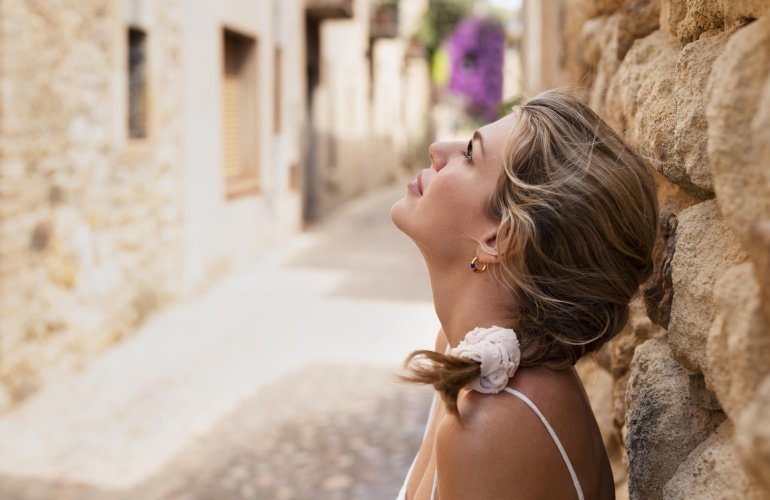
The summer is just around the corner: the sun is starting to warm up, nature is awakening and the desire to travel is getting stronger ... we are ready to organize your holidays in Puglia!
To enjoy a holiday to the fullest, it is always good to be prepared and set a list of places to visit, so we want to suggest the 5 must see places and the best experiences for your holiday in Puglia!
Top 5 places to visit in Puglia
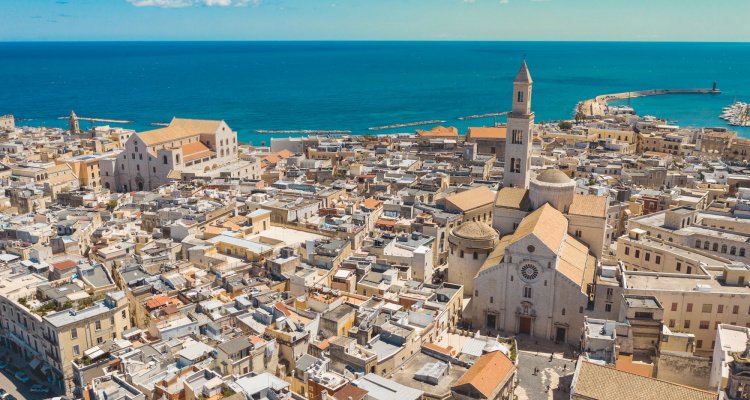 Lonely Planet
Lonely Planet
Bari
The first of the places to visit during a holiday in Puglia is its Regional Country Seat: Bari is rich in history but also in experiences in the alleys of the old city!
The district of San Nicola, better known as Bari Vecchia, is located within the ancient city walls, on a peninsula enclosed between the new and the old ports: it is a labyrinth of narrow twisty lanes where you will be captured by traditional scents of the cuisine of the real old city of Bari. These will remain in the memory of every traveler.
What to see in Bari Vecchia
- The Basilica of San Nicola di Bari
The Basilica houses the relics of St. Nicholas and represents the encounter between two different cults: the Christian religion and the Greek Orthodox cult.
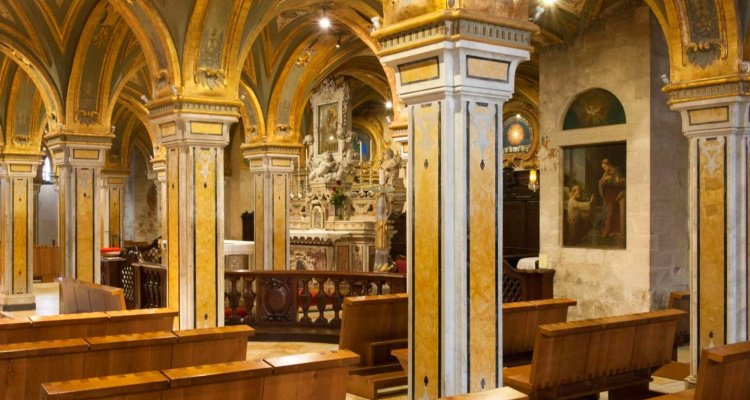
- The Cathedral of San Sabino
The bell tower that dominates the old city of Bari and the central rose window are striking.
- Piazza Mercantile
It is the beating heart of Bari's old town, from here there are many narrow streets that radiate throughout the historic center, nearby you can admire the “colonna dell'infame" (the column of justice), the house of Niccolò Piccinni and the fountain of the Pigna. Piazza Mercantile is full of bars and is also an important destination for the locals enjoying its clubs and restaurants.
- Piazza Ferrarese
This square was named after a family of merchants originally from Ferrara who lived in Bari, it represents the entrance to the old city of Bari.
- The Wall
It is the only panoramic point of the old city, from here you can admire the longest promenade in Italy with its institutional buildings and the new commercial port.
Experiences in Bari Vecchia: the orecchiette street
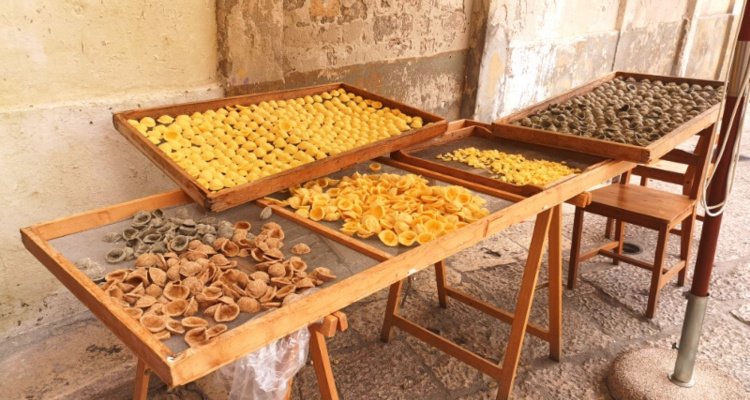 Web
Web
Whilst enjoying a promenade through the narrow streets of Bari Vecchia and after passing the Arco Basso, the real access to the oldest area of the old city, you will reach the famous Strada delle Orecchiette: you will be kidnapped by colors, smells and sounds which tell the true everyday life of the inhabitants of Bari Vecchia.
It is easy to meet women sitting in front of their house who knead and work the orecchiette and let these dry on wooden benches. Of course you can buy real homemade orecchiette in simple plastic bags, bringing with you a piece of Puglia.
 La Gazzetta del Mezzogiorno
La Gazzetta del Mezzogiorno
Mrs Nunzia Caputo is one of the housewives you will meet in the street of orecchiette, she represents Bari's folklore by participating to the New York Times Travel show, making orecchiette at Puglia’s stand and presenting all products of the territory.
Street Food in Bari Vecchia
The experience in Bari Vecchia must absolutely include the tastings of typical local products:
- The Sgagliozze
Fried and salted polenta strips
- The Poppizze

Pizza dough fritters, salted or sweetened according to taste. It will also be possible to buy these specialties from the locals in front of the house. They are equipped with stoves and pots, preparing this delight for the palate.
- The Panzerotti
Calzoni stuffed with mozzarella and tomato (today there are infinite variations) strictly fried, to be eaten hot. The challenge is not to get dirty while eating…!
Monopoli and Polignano a Mare
Monopoli
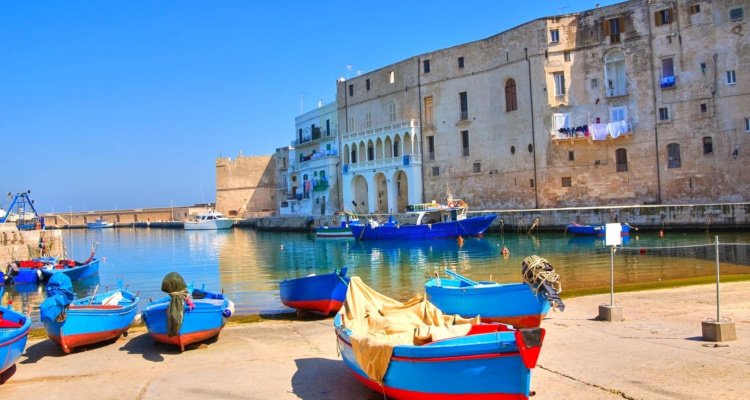
It is a city on the Adriatic coast and one of the most lively and populous ports in the region. The historic center of Monopoli shows evidence of the Gothic and Byzantine dominations, it will be very easy to identify this touch by simply looking at the architectural styles of the buildings!
By walking through the narrow streets of the historic center of Monopoli, you will be amazed by the colors: the white of the houses mixes with the color of the flowers on the balconies, the intense blue of the sea merges with the clear sky ...
You will pass along impressive churches such as the Church of Purgatory, literally a showcase of some friar’s ossuary, or the church of Santa Maria Amalfitana built on a cave and restored several times, the Church of San Domenico with its elegant facade. A visit to the Cathedral of Santa Maria della Madia should not be missed, the perfectly preserved Byzantine icon is safeguarded in the church.
The walk through the narrow streets of the historic center of Monopoli will also lead you to discover the most charming spots to enjoy an aperitif with sea view, buy a hot panzerotto and taste it while sitting on the seafront, or enjoy a delicious fish-based dinner ...
Leaving the historic center and heading south, you will come across a long and relaxing walk to discover the characteristic sandy coves with crystal clear sea down to the Abbey of Santo Stefano.
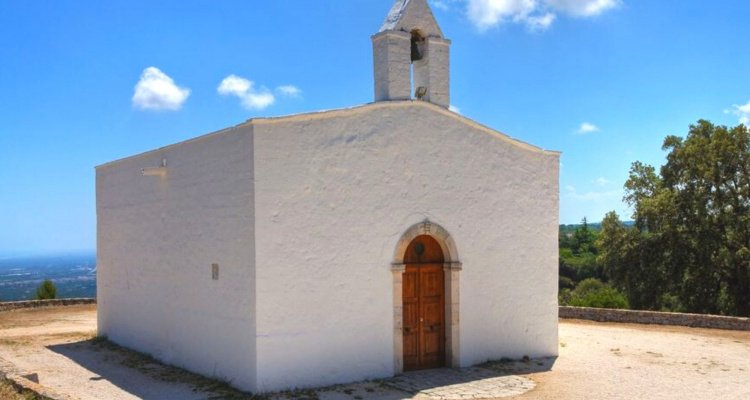 Chiesa di San Michele
Chiesa di San Michele
Monopoli’s countryside is enchanting: the 99 districts surrounding the city are a scenario of centuries old olive trees called “la piana degli ulivi”, a Unesco World Heritage Site. There are several rural churches such as the one of San Michele on a hilltop offering a spectacular view towards Monopoli’s coast.
Polignano a Mare
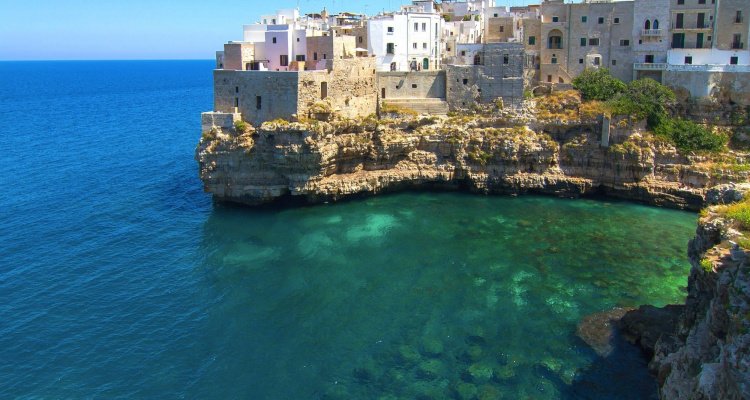
Polignano a Mare is a jewel overlooking the sea: its terraces on cliffs with breathtaking views can be enjoyed at any time of the year.
The Lama Monachile is the symbol of Polignano: a small pebble beach enclosed by two rock walls overlooking the sea, the view from the overlooking Bourbon bridge is stunning.
The historic center of Polignano a Mare is an explosion of emotions: the white houses, the flowered balconies and the blue of the sea make a visit to this village a magical experience.
Moving north from Polignano a Mare, you come across the Abbey of San Vito which was originally a convent, today privately owned. The abbey is located on the sea and is the backdrop to the typical procession on the sea of the relics of San Vito, happening every year on June 14th.
Polignano a Mare is also the birthplace of the great Italian singer-songwriter Domenico Modugno: the town's symbol is also a 3 meters high statue dedicated to him, open arms towards the village whilst he is singing the worldwide famous song “Volare".
Experiences in Monopoli and Polignano a Mare: a tour of the Masserie (ancient farms)
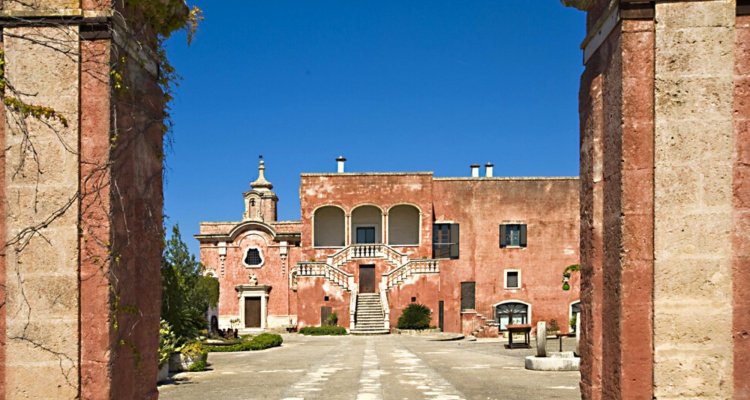 Masseria Spina, Monopoli
Masseria Spina, Monopoli
The fortified Masseria is a building located in the countryside, in an isolated position. Initially it had a defensive purpose, invasions and attacks of the Saracens and bandits were frequent in Southern Italy and particularly in Puglia, which suffered continuous raids from the sea. The Masserie were built with a certain architectural and aesthetic taste thanks to the skill of craftsmen and masons who worked the stone or tuff. All the farms were surrounded by massive defensive walls that ensured protection.
The structure of the farm developed around a courtyard where the owners’ homes and operational rooms were located, the most important farms were enriched by a church or a chapel. The farm was a real self-sufficient micro village where the relations between the owners and the peasants were intertwined: it was not difficult for the children of the peasants to have the opportunity to study thanks to the benevolence of the owners.
The Masserie have faced a deep revaluation in the last years: many have been restored and are still farms, some have been turned into charming luxury resorts, some are educational farms but all maintain the charm of the rural life of a time.
Visiting a Masseria will allow you to discover its history, admire its architecture and also be fascinated by the beauty and uniqueness of the places that tell extraordinary stories.
The Zinzulusa Cave and the Taranta night
The Zinzulusa Cave
 Web
WebThe Zinzulusa cave is one of the ten most important in the world: it is famous for its huge number of stalactites and stalagmites and was formed by a karst phenomenon dating back to prehistoric times, giving to the site a great geological significance. The cave is characterized by an encounter between marine waters and icy spring waters that give life to an ecosystem that is unique in the world.
The Grotta della Zinzulusa takes this name from the “zinzuli”, the stalactites and stalagmites of the cave look in fact like rags and take on the appearance of a worn-out dress.
The cave is divided into 3 parts: the first part is called Conca and from here you can access the longest stretch called the Corridor of Wonders. Here it will be possible to admire a large number of stalactites and stalagmites that take on different shapes, in a chilly ambient you will be very impressed by the limpid and iridescent color of the water.
The second part takes the name of Duomo, because it is characterized by 25 meters high limestone columns, the rock is softer here and there is a s the number of stalactites and stalagmites decreases.
The last part is called Cocito: a basin with crystal clear waters where the overlap between very cold spring waters and warmer sea waters is evident. This basin is subject to frequent studies due to the presence of a very rare species of shrimp: the blind shrimp.
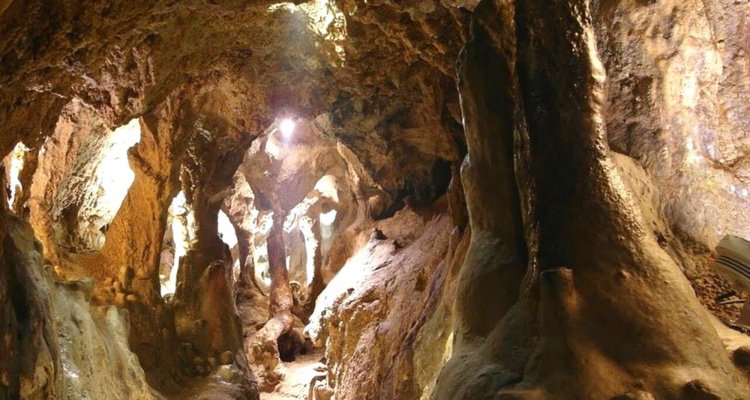
The legend of the Zinzulusa Caves
A popular tradition tells of a rich and evil baron of Castro. The baron's wife died and his daughter continued a very sad life, she always dressed in rags.
One day a good fairy gave the little girl a beautiful dress and tore the rags she was wearing, they flew and reached the cave, petrifying. From that moment the cave took the name of Zinzulusa because of those rags that adorned it .
The fairy threw the baron into the depths of the waters below, and the Cocito lake was formed, the shrimps witnessed this event and were blinded forever.
The girl then married a rich and good prince and lived happily ever after.
The Grotta della Zinzulusa: tips for the visit
Visits to the Zinzulusa cave in the summer go from 9.30 to 19.30. Long queues have to be expected, don’t forget sunscreen and a hat.
By entering the cave you will feel the difference in temperature with the outside (the difference is accentuated in the summer), so we suggest you bring a stole or a light jacket to cover your shoulders. It is recommended to use comfortable shoes that facilitate the passage in sections of the cave that could be slippery.
The Night of the Taranta
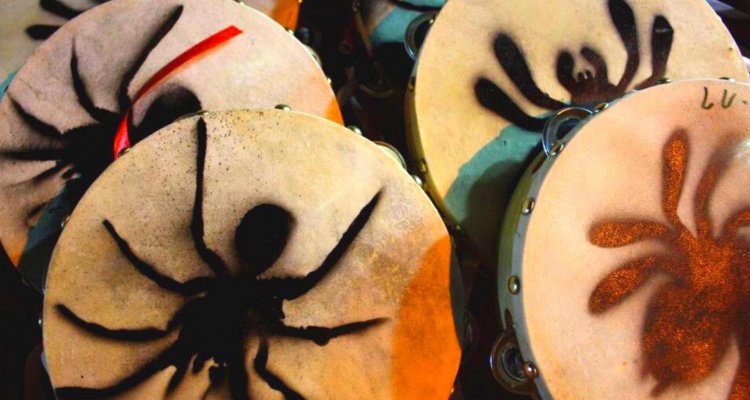 Web
Web
La Notte della Taranta is a popular music festival to enhance traditional Salento music. It is an itinerant event taking place in August, ending with the final concert in Melpignano.
The night of the Taranta is based on the "pizzica pizzica" a lively dance for the healing of the "tarante", women who had been pinched by the tarantula (a small spider that formed during the harvest period) and who entered a state of shock that they could only overcome with music. After days and days of dancing and much sweating, they managed to heal.
In reality it seems that "tarantism" is a sort of reaction to the patriarchal regime that prevented women from expressing themselves and led them to a state of depression: the motivation of the poisonous pinch of the tarantula seemed to be a way out to be able to freely express anger.
The pizzica pizzica is a dance that is done in pairs and includes some basic steps including the cadenced walk, the skipping step and the pointed step and the characteristic use of the handkerchief symbolizes the invitation to your partner to dance.
The pizzica is such an lively dance that even those who have never heard it, will find themselves dancing and getting involved in an overwhelming rhythm!
Lecce
 ItalyRA
ItalyRALecce is one of the most beautiful cities of art in the south, it combines its Messapian origins with the remains of Roman domination and the richness of the Baroque style, thus creating a unique style called "Lecce Baroque" characterized by the use of the so-called limestone from Lecce, easily mouldable and with warm colors.
The historic center is full of examples of Lecce Baroque art, churches and monuments but also on private balconies and terraces.
The streets of Lecce are an open-air museum, the Barocco Leccese is everywhere:
- Piazza Duomo
with a bell tower and two facades, the richly decorated side facade greats us by accessing the square, the most sober one is the main facade.
- Piazza Sant’Oronzo
it represents the city’s living room, a meeting place. The central votive column to the Bishop Oronzo who intervened to spare the city from a plague epidemic.
- Roman amphitheater
the most important evidence of the Roman era.
- Basilica of Santa Croce
begun in the 1300s and completed between the 1500s and 1600s, it is absolutely worth a visit for its balance between the classic and baroque style and the beauty of the interiors.
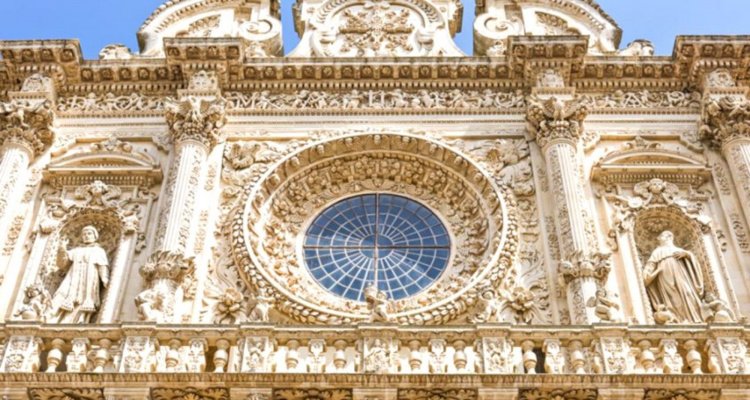
Experience in Lecce: the Pasticciotto leccese
A visit to any city in Puglia is always linked to a gastronomic experience: the discovery of Lecce will not be complete without having tried its Pasticciotto Leccese ...
A small boat of fragrant shortcrust pastry topped with lemon and black cherry flavored custard, covered with shortcrust pastry brushed with egg, baked in its traditional copper form ... needless to say, it is impossible to express in words the unique sensation and taste of this typical Lecce delicacy! Pasticciotto should be eaten hot and accompanied by Lecce coffee, that is coffee on ice with almond milk.
In 2008 the pastry chef Angelo Bisconti invented a variety of pasticciotto that has become famous all over the world: Il Pasticciotto Obama! In the climate of the American election campaign and following Obama's victory, Angelo decided to add cocoa to the dough and to the filling, thus inventing a new modification to the original recipe.
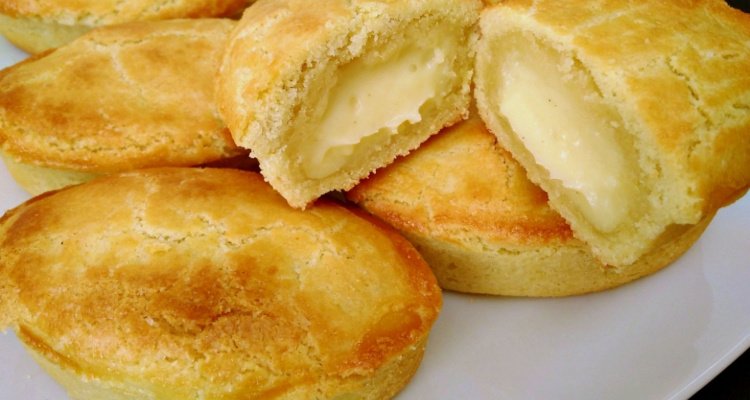
Pasticciotto Leccese: recipe
Ingredients for the shortcrust pastry:
www.nelsalento.com
- - 500 g. flour
- - 250 g. of butter
- - 200 g. of sugar
- - 3 yolks
Preparation:
To make the shortcrust pastry, combine the butter and flour with your hands. Make a fountain and put the egg yolks with the sugar in the center, mixing very quickly. Form a ball and wrap it in cling film, keeping it in the fridge for 30 minutes.
Ingredients for the Cream:
- - Half liter of milk
- - 3 eggs
- - 125 g. of sugar
- - 1 sachet of vanillin
Preparation:
For the cream instead, take a bowl and mix the eggs, sugar and vanilla, adding the sifted flour a little at a time. Pour the boiling milk over the mixture and put on the stove, stirring until boiling. Remove from the heat and allow to cool.
Form 30 cm discs. fill the bottom of the mold with the previously rolled shortcrust pastry, pour in the cream and cover with the second disc. Remember to close the edge and bake for 20 minutes at 180 degrees.
Castel del Monte in Puglia
The castle was built on a hilltop at a few kilometers from Andria. It was built by Emperor Frederick II of Swabia in 1240 and its origin is shrouded in mystery: the legend tells that Castel del Monte stands where there was a statue with an enigma, a Saracen managed to solve the enigma and digging on the hill he found a treasure which he used to build the castle.
Castel del Monte has no walls, moat or stables and that is why it has been attributed various functions: from a temple to a secluded place for studying to a place to relax.
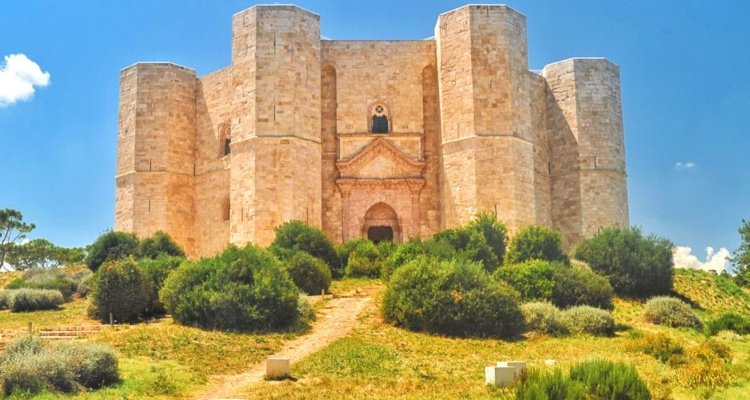
Castel del Monte is considered an esoteric project and is shrouded in an aura of mystery: the number 8 recurs in the entire construction of the castle in fact there are 8 octagonal towers, a labyrinth of 8 rooms, 8 windows per floor, the steps of the snail that unite the two floors are 44… for this reason it is said that it is magical and that it even holds the Holy Grail (the chalice used by Jesus during the last supper). Once you enter the castle, you will never be able to turn your back on the entrance in the form of respect!
Frederick II left 3 footprints in the castle to prove that he was the builder: the first footprint is next to a lily, the second is number 56 (age of the emperor at his death) and the third is the letter F .
The position of the Castello del Monte is designed so that during the days of the solstice and equinox the shadows of the walls have a particular direction. The portal at the entrance to the castle consists of 2 columns and 2 lions: the first looking towards the sunrise on the winter solstice, the second at sunrise on the summer solstice.
The Castel del Monte is one of a kind and has been listed as a UNESCO World Heritage Site.
The visit to Castel del Monte is a must for those who are in Puglia to discover its mystical side!